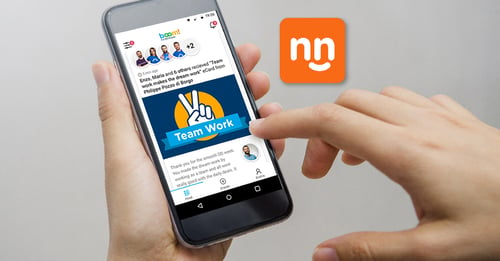Employee retention is a major concern for many industries. Working in the healthcare industry for the past seven years as a Client Success Manager, I’ve seen first-hand the costs of high turnover and the benefits of increasing retention.
Increasing employee retention in healthcare doesn’t happen overnight. It requires an actionable strategy, with concrete steps each organization can take to make gradual improvements.
We know that there are many disadvantages of employee turnover. According to the 2022 survey on healthcare retention from NSI Nursing Solutions, Inc., the 2021 national average hospital turnover rate is 25.9%, up from 18.2% just a mere four years ago. And, according to the survey, the average cost of turnover for a bedside RN is $46,141.
This means that the average hospital loses close to $7 million each year in associated turnover costs, and that's only when looking at RNs.
Each percentage point in RN turnover costs—or saves—the average hospital an additional $262,289. Given declining reimbursements and other financial pressures, it’s easy to see why employee retention is so important for the healthcare industry.
Improving retention can reduce stress in the work environment, save money, enhance the patient experience and boost morale in your organization. Consider the following approaches as you develop or improve your organization’s retention strategy.
1. Offer competitive pay
While it may seem contradictory, offering competitive compensation is a great way to save money in the long run. By increasing salaries, you may find you are better able to satisfy and retain your most valuable workers, and therefore, cut turnover costs significantly.
As the healthcare industry continues to grow, so does the demand for quality personnel, benefits, pay and bonuses. If a pay raise isn’t an option, you can look at other options such as an employee discounts program to extend your people’s disposable income.

2. Dole out that employee recognition
While positive patient feedback is at the heart of any good healthcare worker’s motivation, it is also important for you, the employer, to communicate positive recognition where it’s due.
What’s more, positive reinforcement is proven to increase employee engagement, leading to higher patient satisfaction! A pat on the back from a team leader or peer will work wonders in improving morale and inspiring your staff to continue to work hard and stay loyal to the organization.
In addition to its positive impact on retention, employee recognition also has a very interesting ripple effect within an organization. Recognition makes employees feel good, both when they get recognized and when they acknowledge someone else.
Recognition is contagious: It offers many benefits in the work environment.
When an employee hears about the great work being done by other departments within their organization, they gain insight into those teams’ schedules and strategic initiatives.
This can create the opportunity for more efficient collaboration. When employees understand what their coworkers do, they can reach across boundaries and offer to help, or ask for help. Recognition also enables employees to understand the type of work that is “praise-worthy.”

Employee recognition essentially provides employees with a real-world example of how to meet—and exceed—leadership’s expectations. For example, to encourage everyone to respond to call lights, share the story of how a non-clinical person was passing by a patient room and responded to a call light when the nursing staff was busy.
Increase the impact of the story by listing the results of that employee’s actions: Reduced stress for the team, an increased feeling of teamwork, higher patient satisfaction and possibly even better clinical outcomes.
The story can be a powerful reminder to all employees of the organization’s ultimate mission – excellent patient care in a supportive work environment. Even with the best of intentions, those overarching goals can sometimes get lost amidst busy schedules, constant patient care and siloed communication.
Three easy ways to show recognition include:
| 1. Offering praise on social media. With an employee communications tool, you can display a page or real-time feed where employees can read success stories and interact with each other through comments and “likes.” This promotes a culture of gratitude, increases visibility on team achievements and builds positivity across the group. |
| 2. Using an employee recognition program to acknowledge workers that have demonstrated the company’s values or contributed to the goals of the organization. |
| 3. Saying it with a card. Using eCards is a clever and creative way to promote co-worker encouragement, and simplify the process of giving and receiving morale-boosting feedback. |
Rewards and recognition can make a big difference in staff morale, and it can make or break your retention goals.
.jpg?width=500&name=nurse-healthcare%20(1).jpg)
3. Invest in ongoing education
As medical treatments and methods evolve, healthcare workers must continually learn to keep up with new research and technological developments. Continuing your employees’ education will only further advance and develop their skills, which will, in turn, further improve the patient experience and increase productivity.
Two ways to promote continuing education include offering a clear path for growth within the organization. Another way is creating plenty of training opportunities. Make sure you have training programs in place to give your employees the chance to work toward their goals.

4. Connect your team
We all know that communication is vital for the success of any company – and it is one of the biggest challenges for most. No matter how much leaders think they are communicating with employees, it is rarely “enough” for the workforce. As the old saying goes, “You can never over-communicate.”
If you're looking for an easy way to connect employees, think mobile first. For healthcare workers who are constantly on the go, working long hours, and usually not at a computer, finding a tool to connect all employees can be tricky. A mobile employee engagement app can help fill those gaps, connecting peers and managers right from their smartphones.
5. Boost engagement
It can be easy to lose touch with your staff when faced with the busy schedules that often come with healthcare careers. To increase retention, find opportunities to improve engagement with your team. Here are some ideas to get you inspired:
- Host a monthly or quarterly lunch.
- Encourage excitement around special sporting events, such as March Madness.
 Organize quarterly volunteer opportunities with local charities.
Organize quarterly volunteer opportunities with local charities.- Ask your teams or departments to conduct regular satisfaction surveys.
- Offer dress-up contests at different times of the year, such as Halloween.
Employee retention is important for any organization, but it can be particularly challenging within the healthcare industry. High turnover is not good for employees, patients or the organization’s bottom line. When you effectively recognize, connect and communicate with your team, you can improve employee engagement and retain more of your most valuable workers.

 Alana Cummings
Alana Cummings



